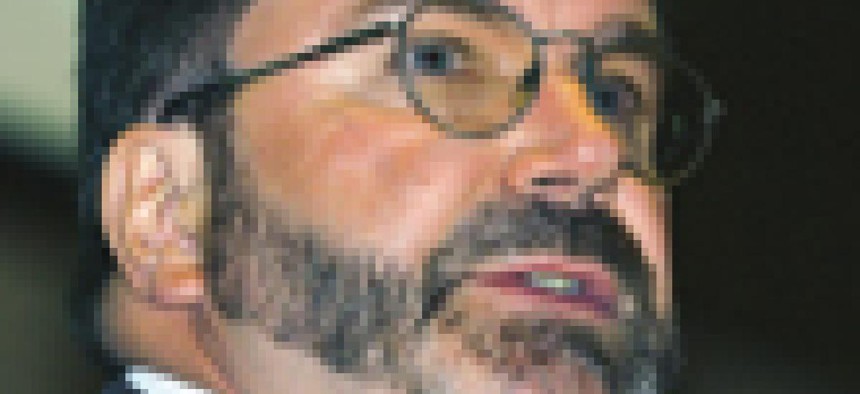Fed budget: Good, bad news for IT

The good news for industry is that 83 percent of the fiscal 2005 federal budget for information technology, or $50.5 billion, will go to government contractors.
The good news for industry is that 83 percent of the fiscal 2005 federal budget for information technology, or $50.5 billion, will go to government contractors.The bad news is that federal IT budgets are expected to grow only slightly from 2005 to 2010.The overall government IT market will grow 3.6 percent annually from fiscal 2005 to fiscal 2010, according to the Government Electronics and Information Technology Association's annual forecast for the federal IT market. The Arlington, Va., trade group expects the government's overall anticipated IT budget of $60.8 billion in fiscal 2005 to reach $72.9 billion in current dollars by fiscal 2010. Information technology accounts for more than 7 percent of the federal government's total discretionary budget, GEIA said.The total growth rate is lower than last year's annual growth forecast of 4.1 percent, primarily because the growing federal deficit is squeezing discretionary budgets, GEIA said.Spending by defense agencies on IT products and services will grow about 4.4 percent annually, compared to 2.9 percent for civilian agencies.GEIA based its forecast on interviews with senior officials and decision-makers from defense and civil agencies, oversight agencies, Congress, the administration and investment firms. The trade association presented its annual forecast for the federal IT and defense marketplaces Oct. 12-14 in Vienna, Va.GEIA forecasts that civilian agencies will spend about $32.1 billion on IT in 2005. Most of the growth during the five-year period will come from the Homeland Security and Health and Human Services departments.DHS' IT budget will stand at $4.4 billion in fiscal 2005 and increase at a 3.5 percent annual growth rate to more than $5 billion in fiscal 2010. The war on terror is perhaps the most important component in spending growth for DHS, with many funds directed to border patrol surveillance and sensor technologies, aviation security, radiation and explosion detection technologies, and cargo security screening.HHS' IT budget is expected to grow from $5.1 billion in fiscal 2005 to $6.1 billion in fiscal 2010. Growth will be spurred by the department's efforts to consolidate its IT functions as directed by the President's Management Agenda. Also, the decentralization of HHS' agencies has created needs to make information available via data warehouses, knowledge management systems, decision support systems and customer relationship management solutions.The Office of Management and Budget plays a strong role in shaping IT programs and bringing them into alignment with the President's Management Agenda, said John Williams of Northrop Grumman Corp. He chaired the civilian agency committee for GEIA's forecast. In determining funding levels, OMB is emphasizing infrastructure security and the need for agencies to write "business cases" to justify new and existing programs.Another member of GEIA's civilian agency committee, Mary Freeman of Verizon Communications Inc. of New York, said GEIA had less data for civilian agencies than in years past because the President's Management Budget gave discretionary budgets through fiscal 2005 only."They probably didn't want us to see the depths of the cuts that some of the civil agencies would have going forward," she said.GEIA forecasters said agencies will be buying software and solutions that provide more storage and processing. Agencies also need wireless technologies, broadband and voice over Internet protocol services, and secure infrastructure protection.The defense IT budget of about $28 billion in fiscal 2005 will grow to $35.6 billion by fiscal 2010, GEIA said. The global war on terror and infrastructure upgrade will drive much of that growth. The 4.4 percent growth rate in DOD IT spending is a decrease from the 6.4 percent growth from fiscal 2000 to fiscal 2005, according to GEIA's forecast.The total IT budget for defense fiscal 2005 will consist of $9.9 billion for defense agencies, $6.3 billion for the Air Force, $5.4 billion for the Army and $5.8 billion for the Navy.GEIA's prediction is predicated on U.S. troop withdrawal from Afghanistan and Iraq in fiscal 2008 with concurrent drop in overall costs, the country will not deal with any additional conflicts, and eventually fewer troops will be stationed abroad.Jim Wrightson of Lockheed Martin Corp., who was a member of the defense conference team, said the forecast was "surrounded by uncertainty" that is reflected in the predicted dollar swing of as much as $1.5 trillion in either direction, depending on how much the government spends on defense from 2005 to 2015. "The baseline forecast is not going to be enough to describe the future," Wrightson said. "We recognize we need to deal with relative uncertainty" based on different national security threat types and levels. Staff Writer Roseanne Gerin can be reached at rgerin@postnewsweektech.com.


GEIA committee member John Williams said OMB plays a strong role in bringing IT projects into alignment with the President's Management Agenda.
Rick Steele

